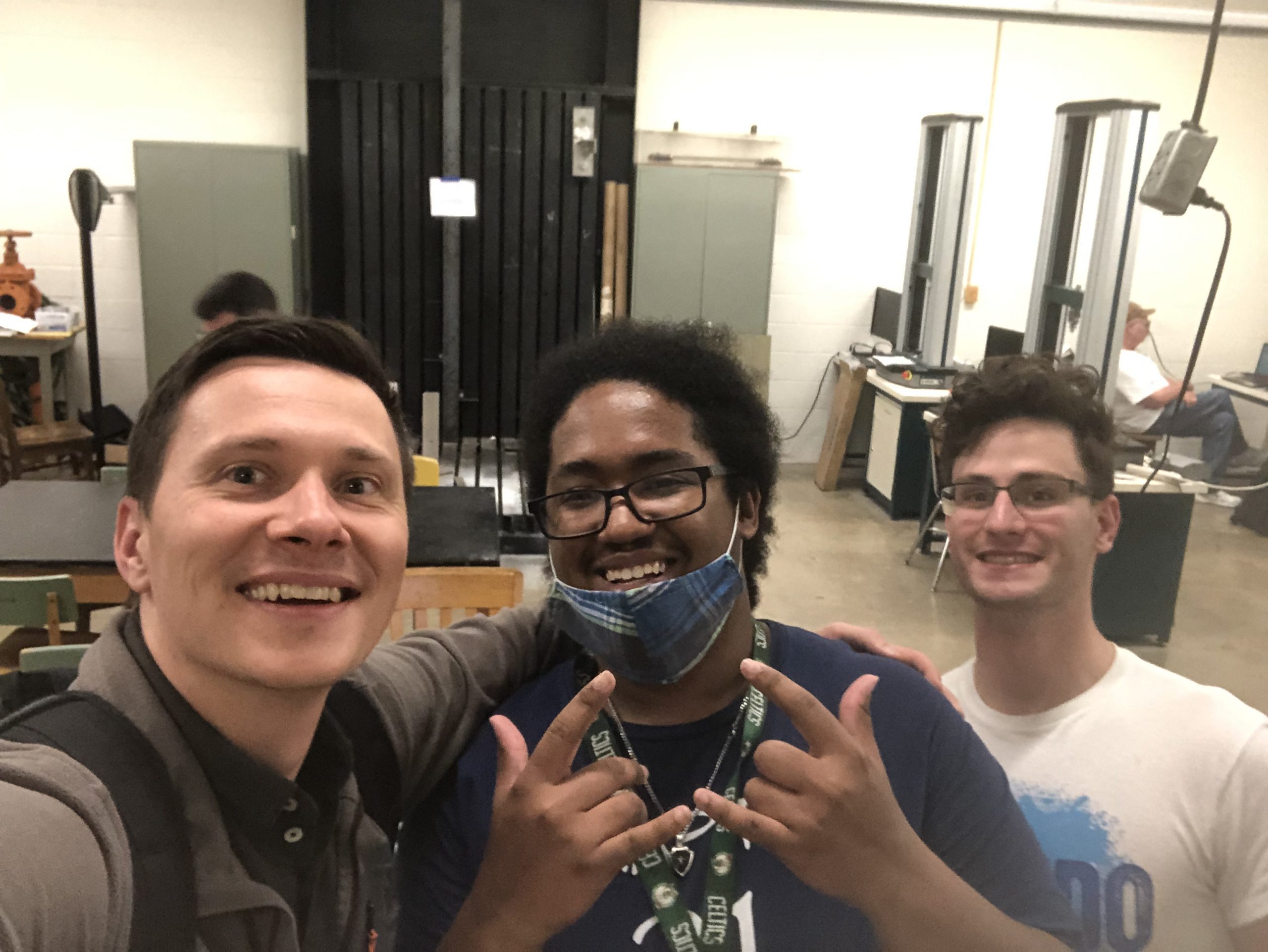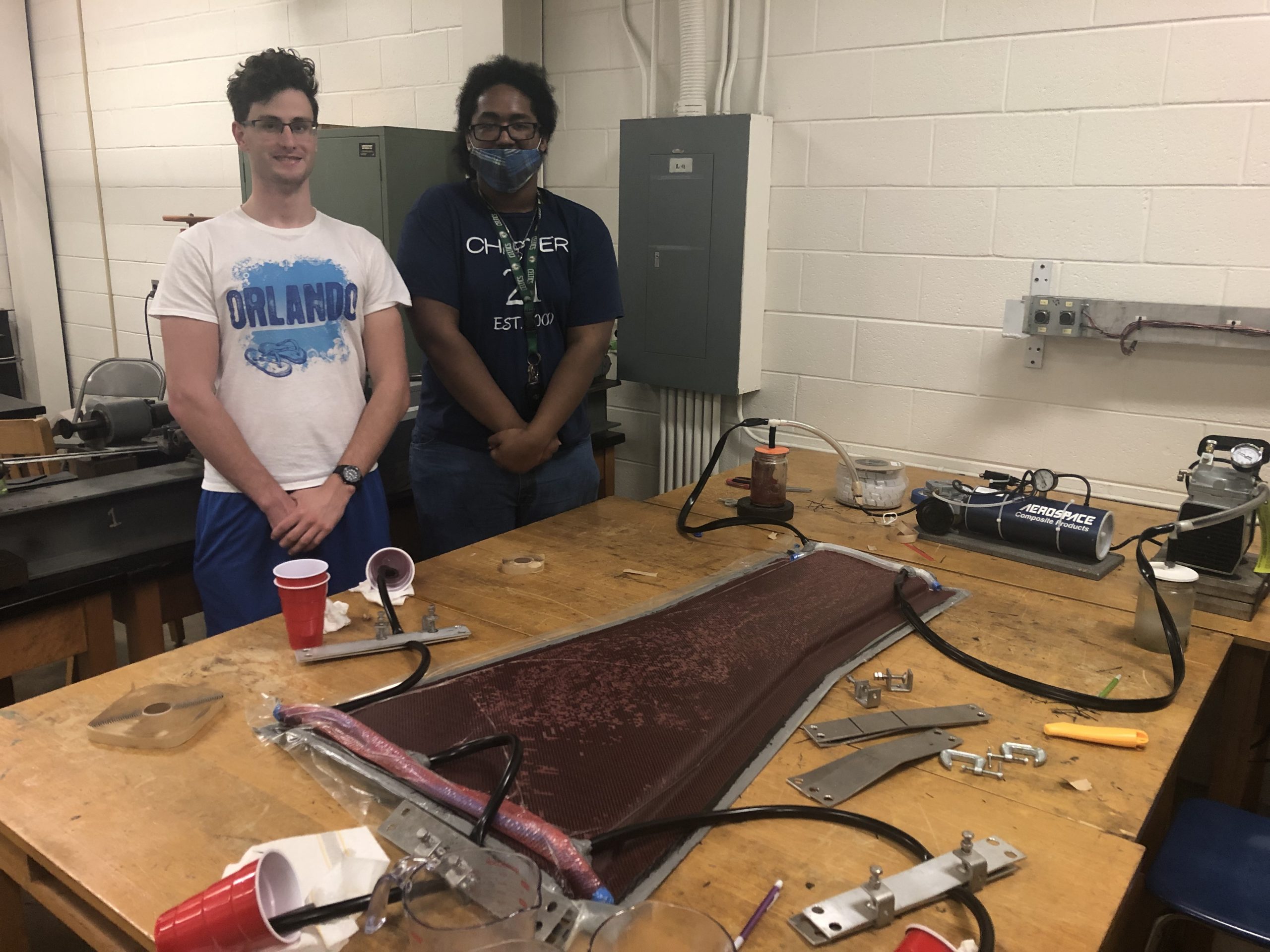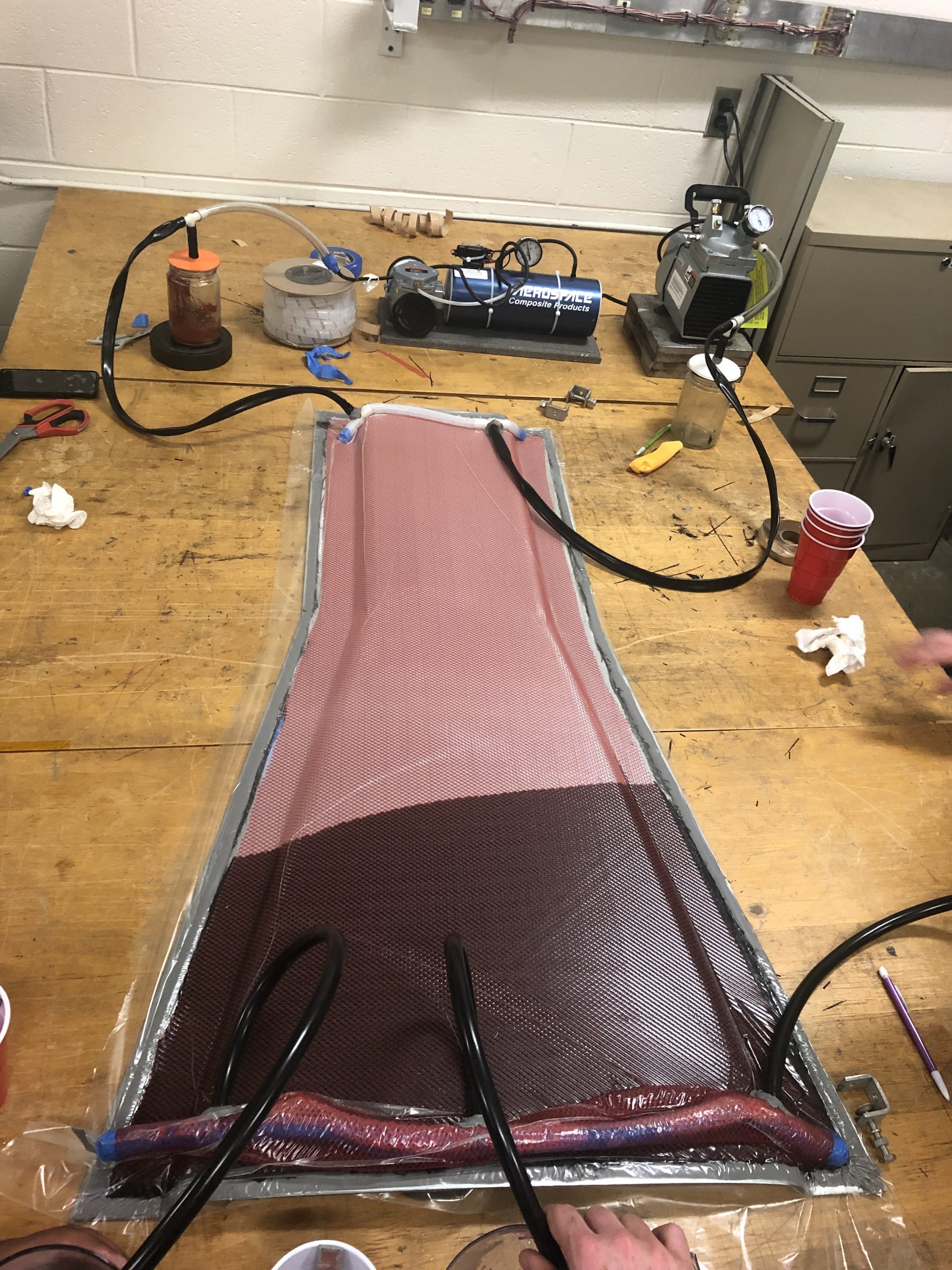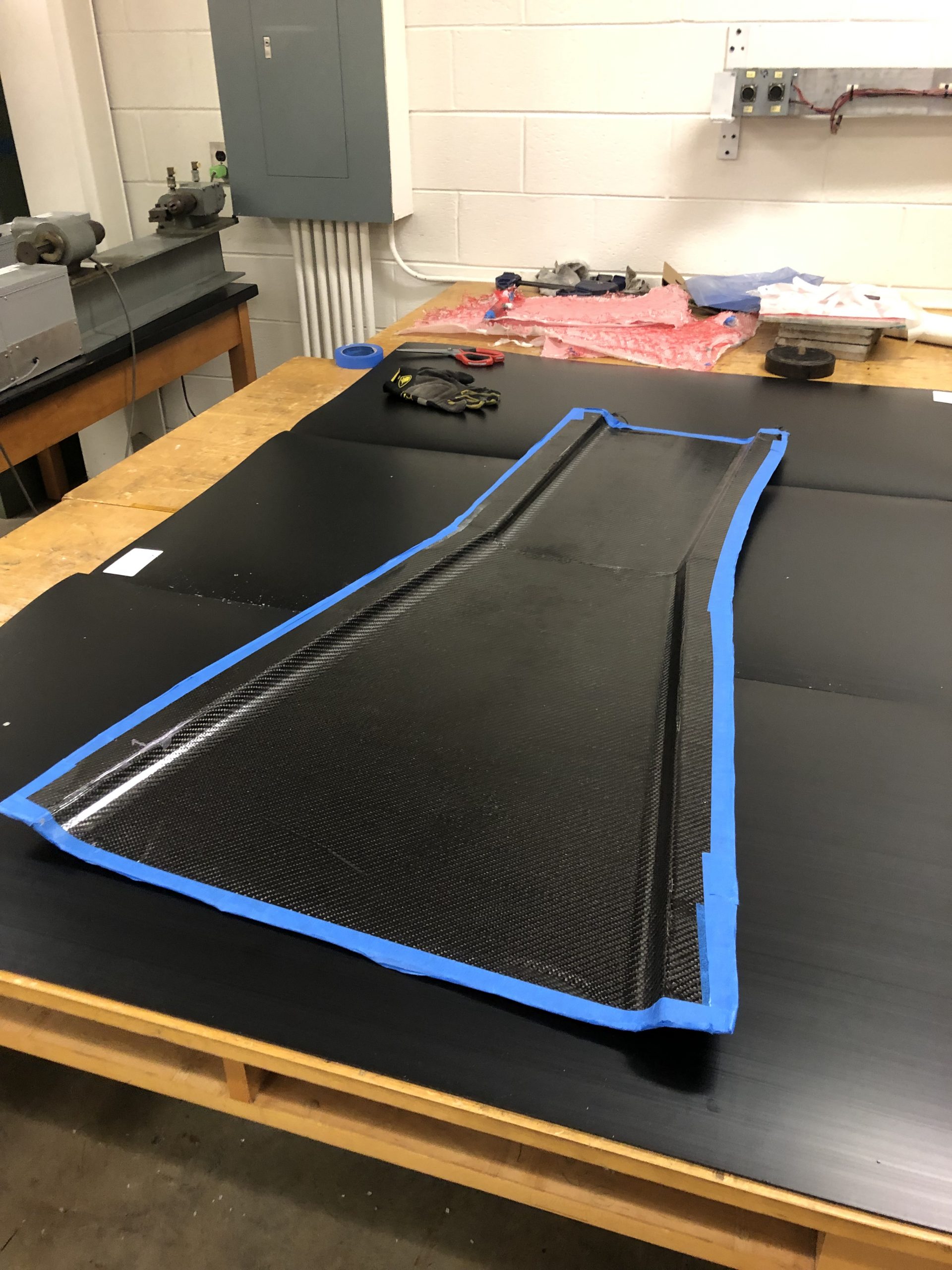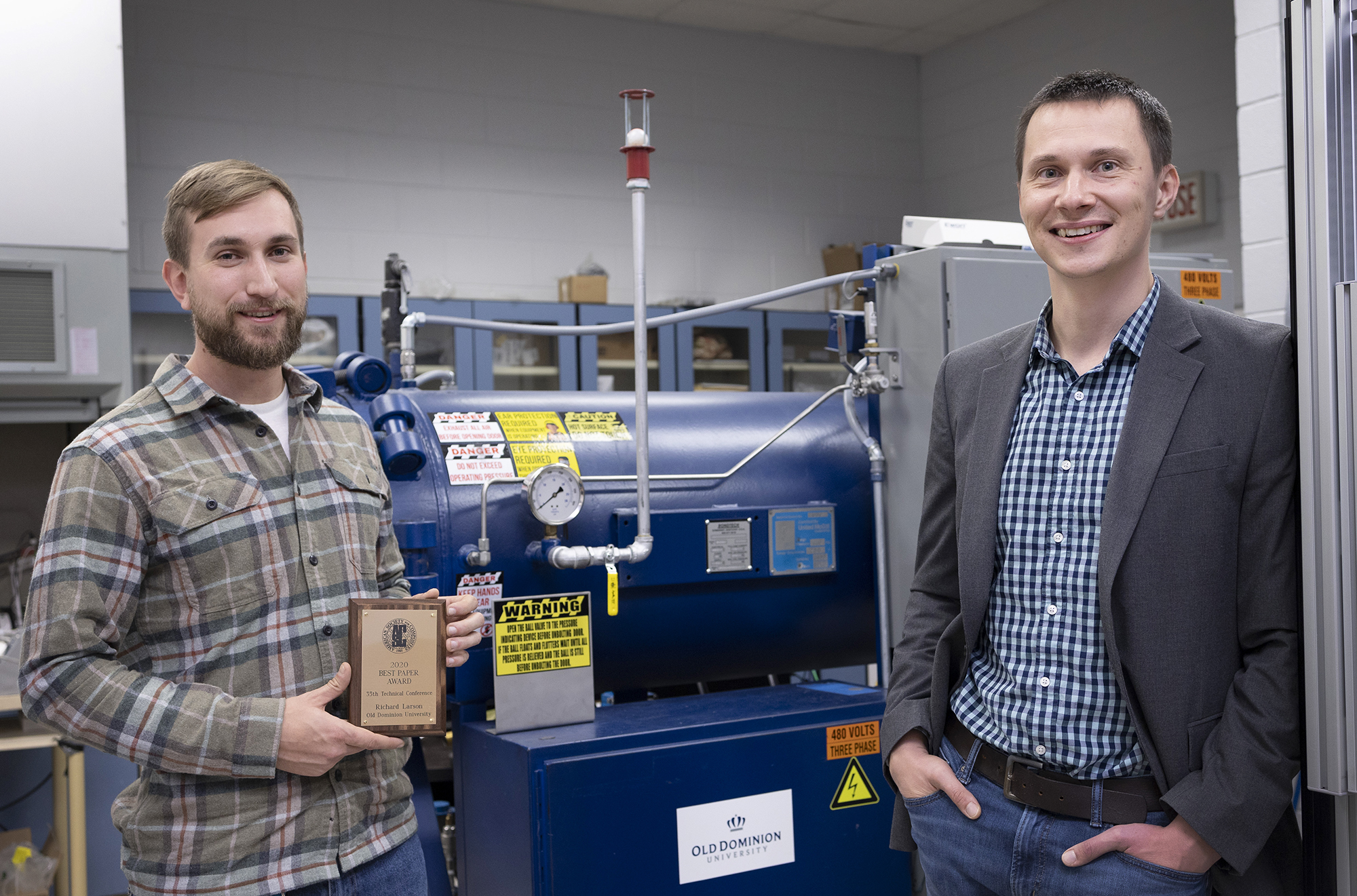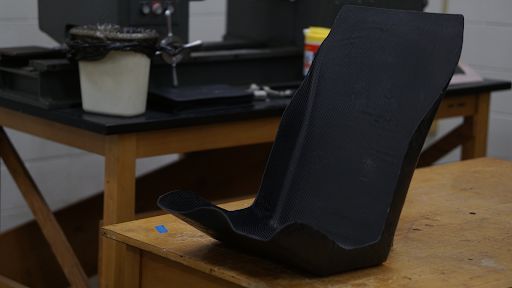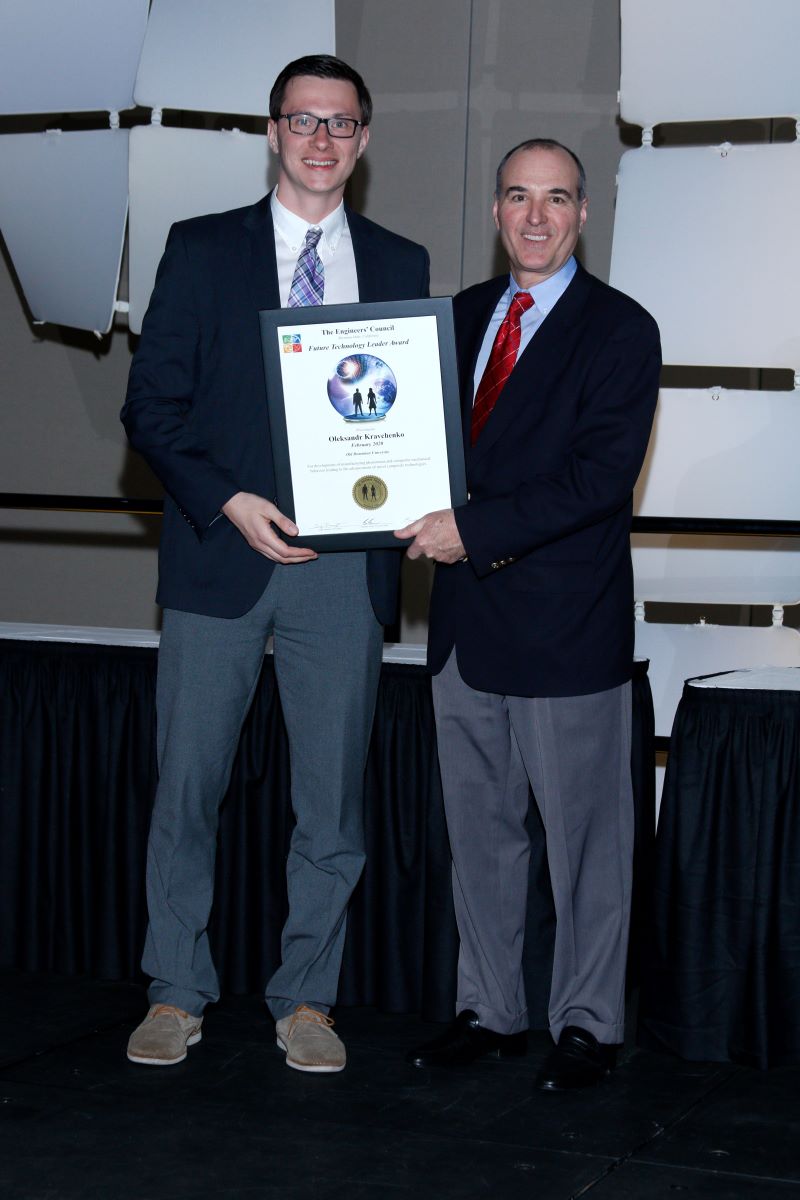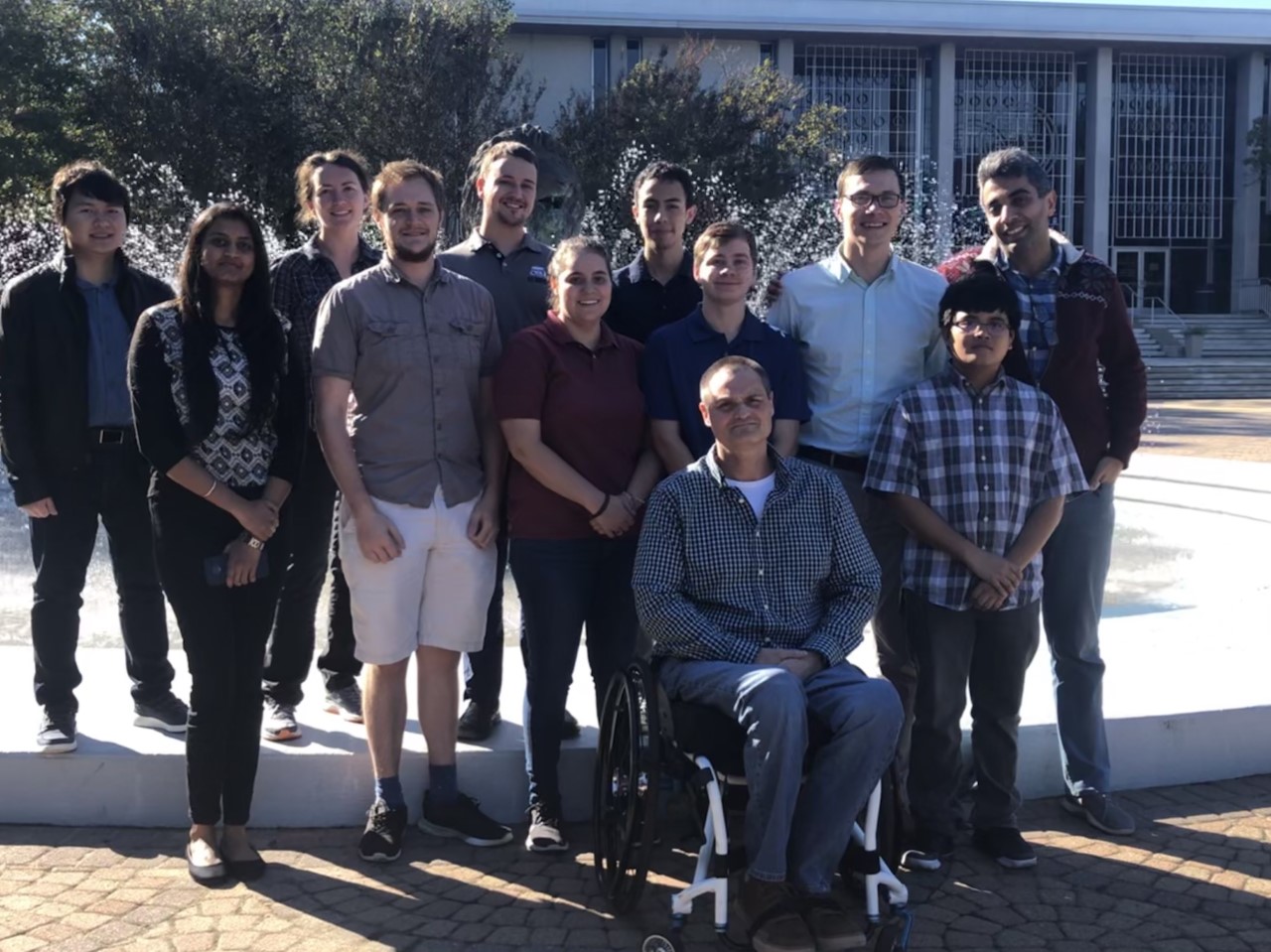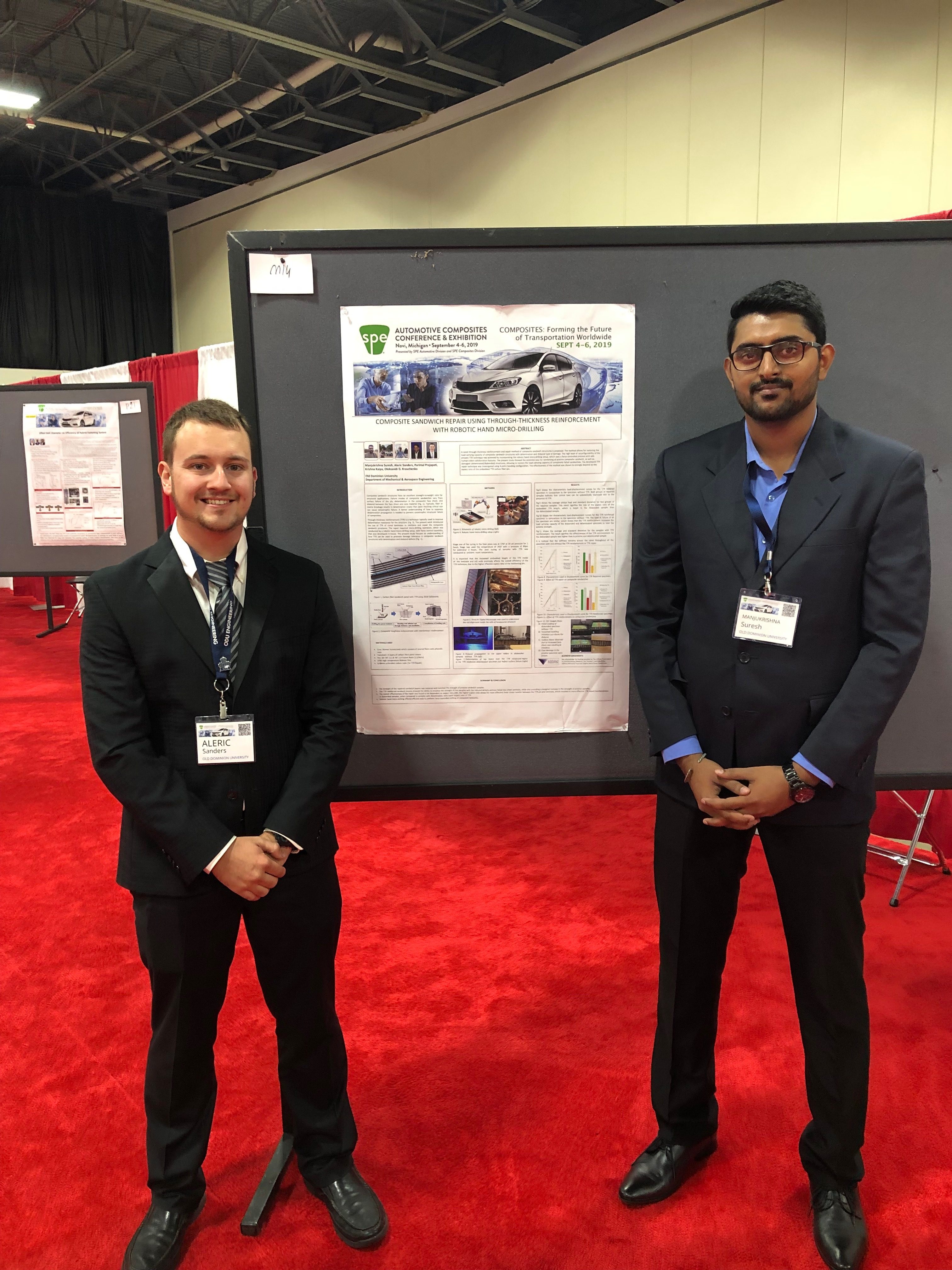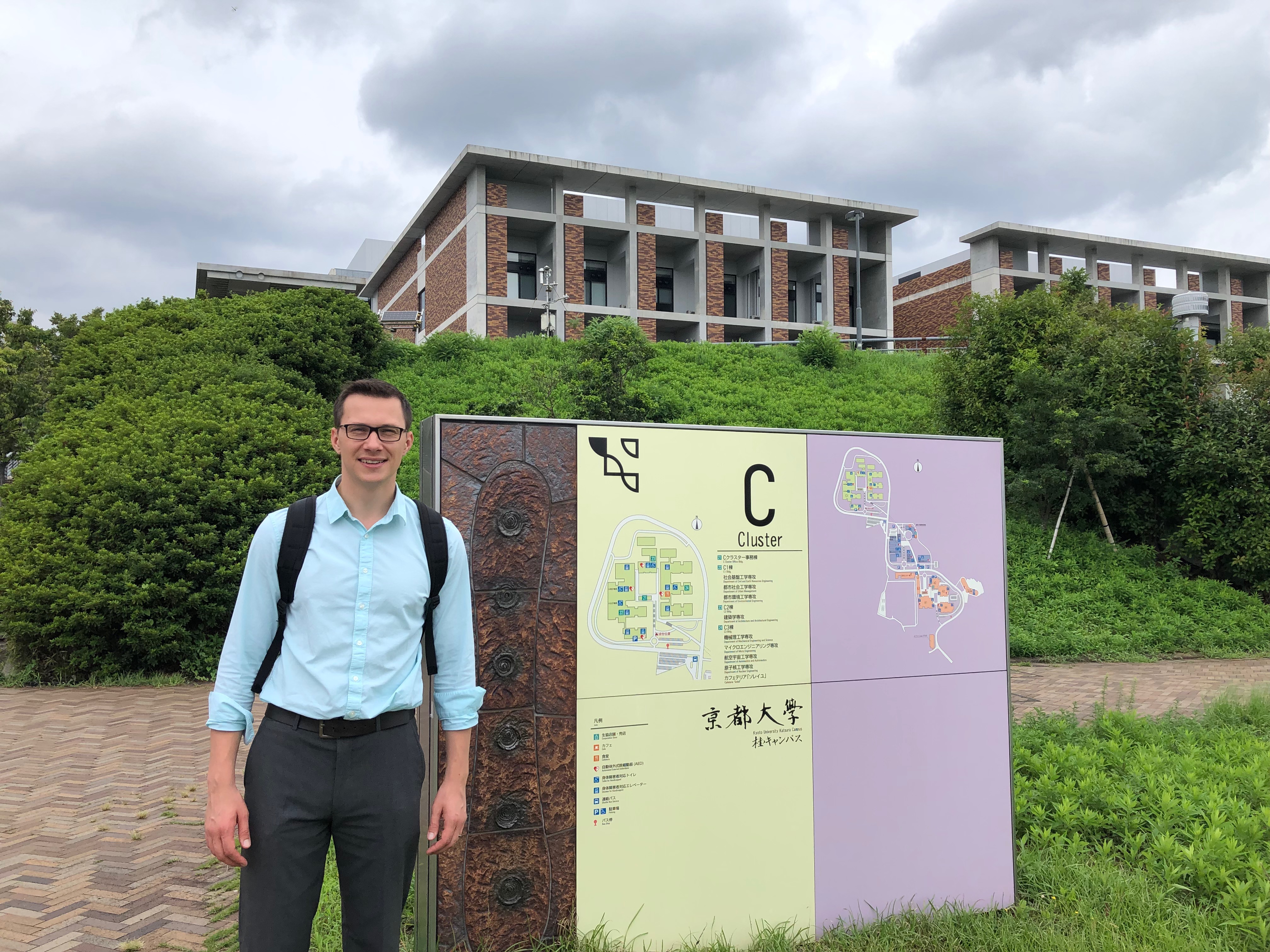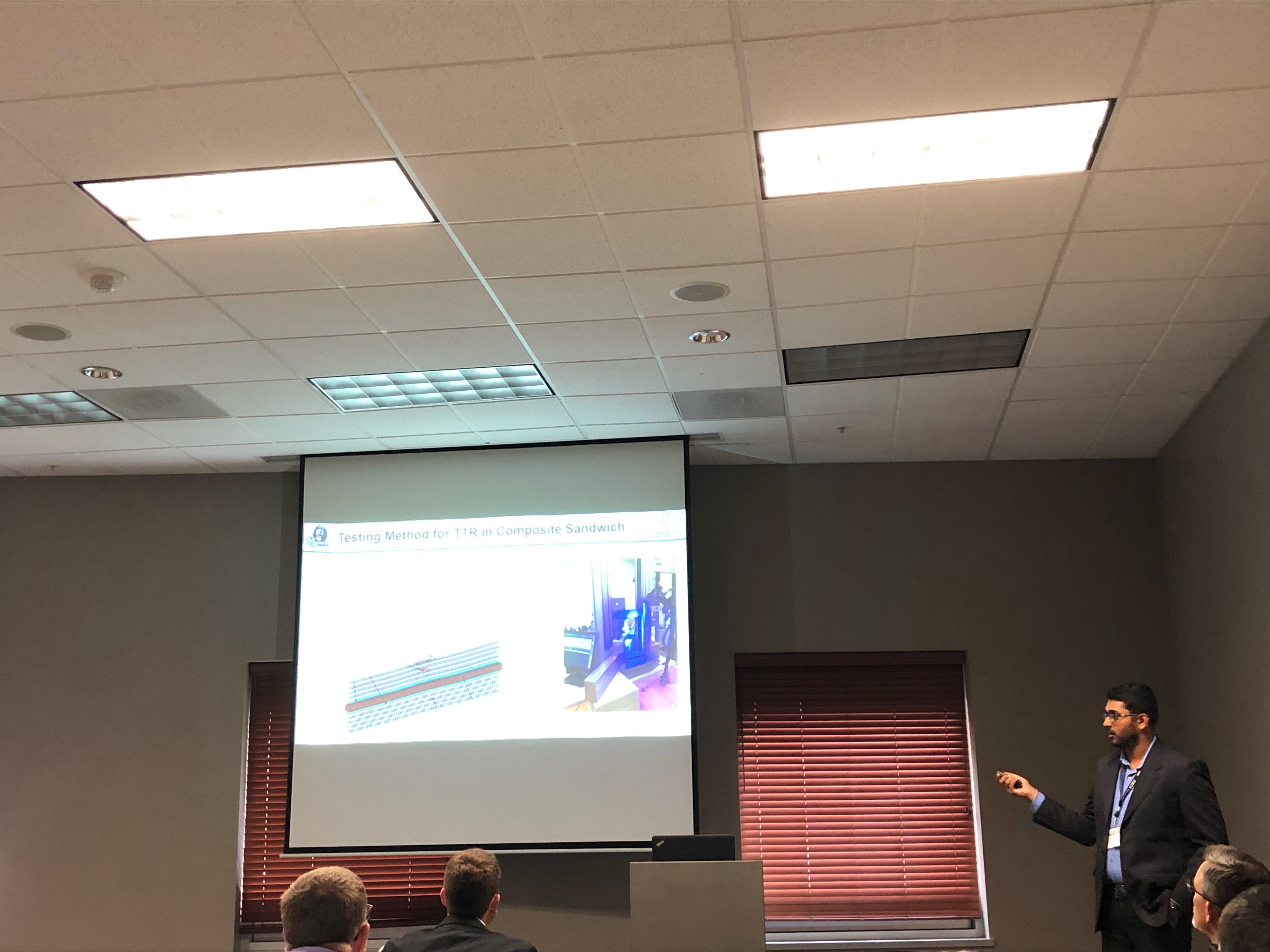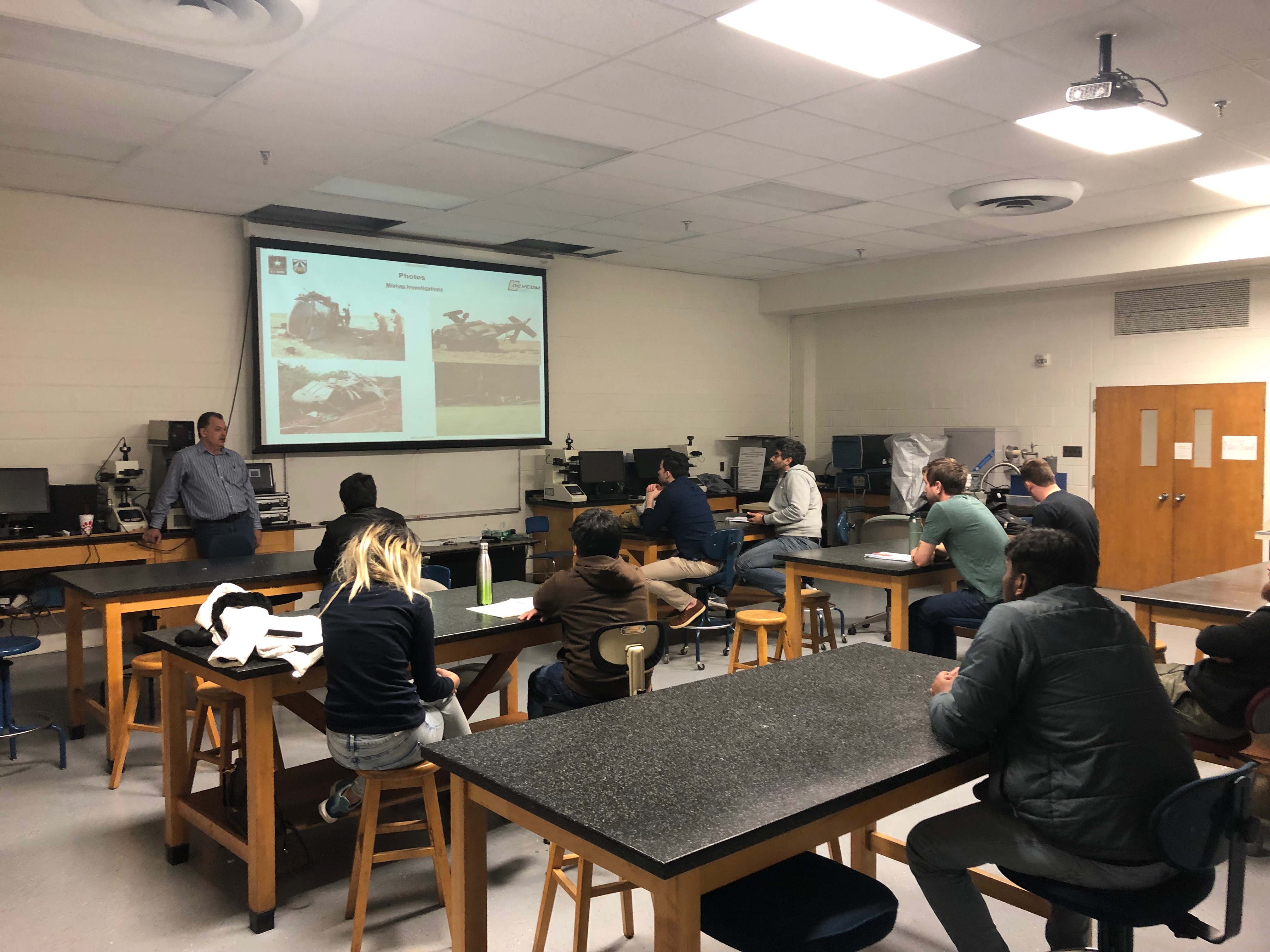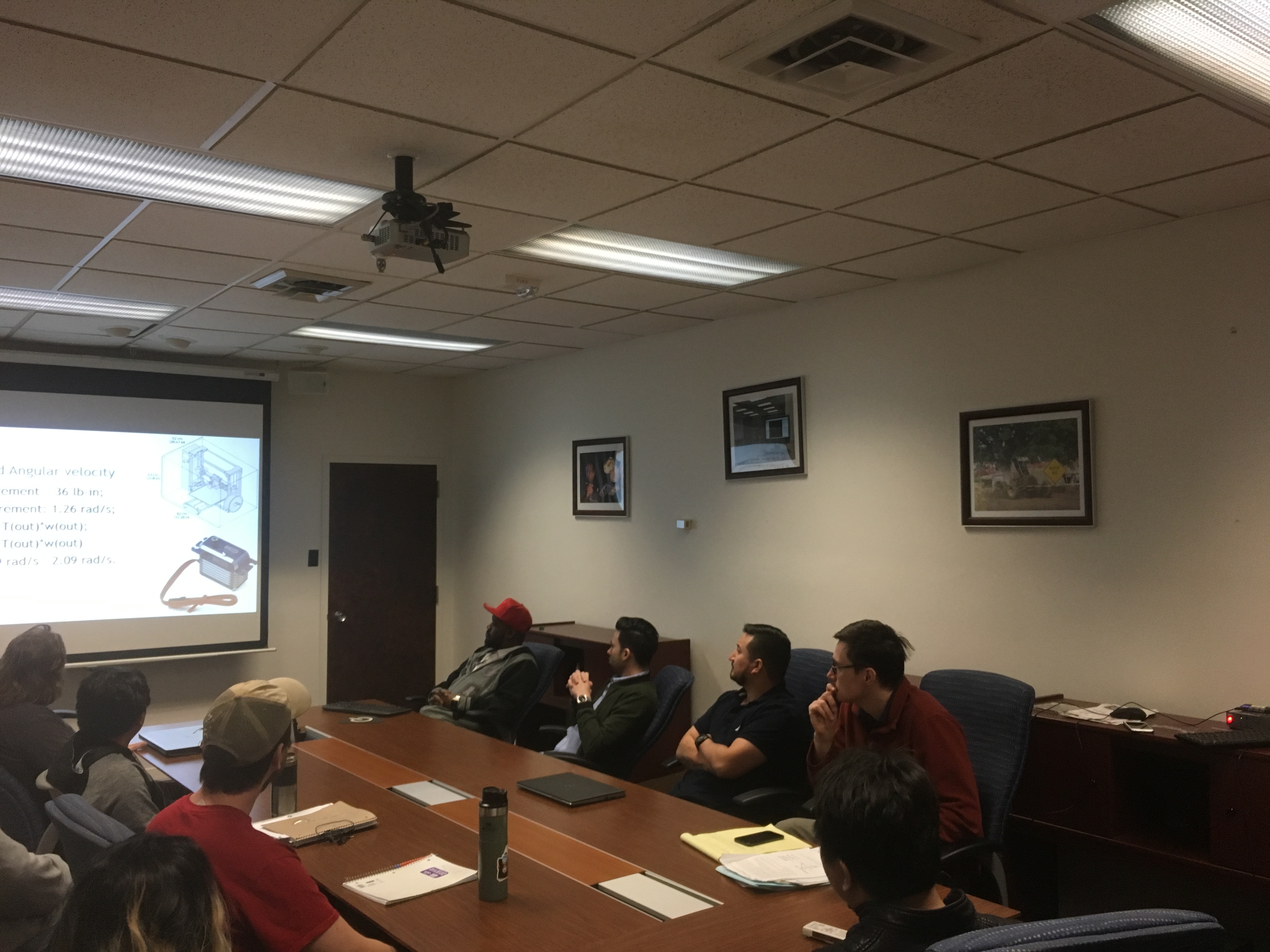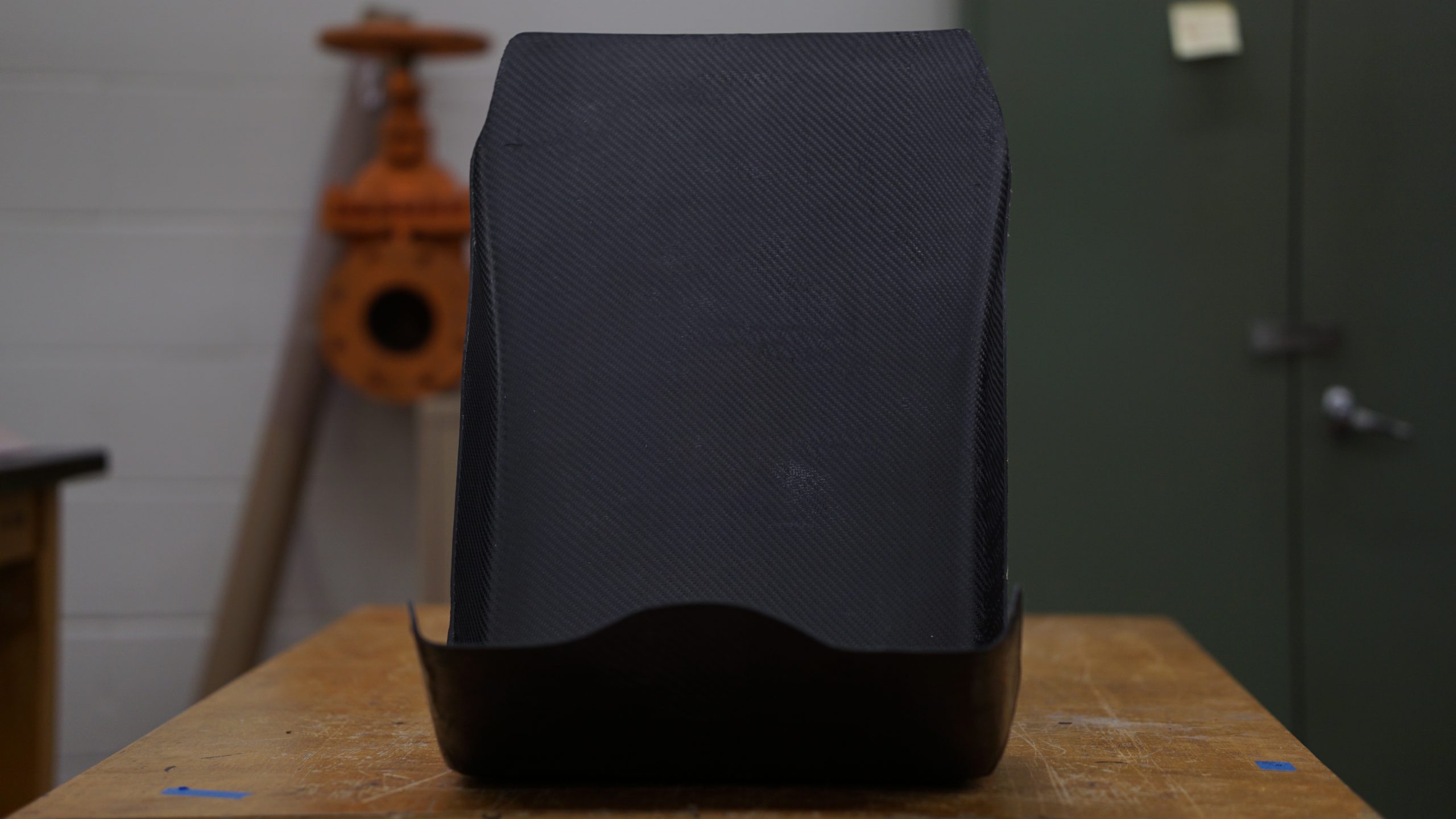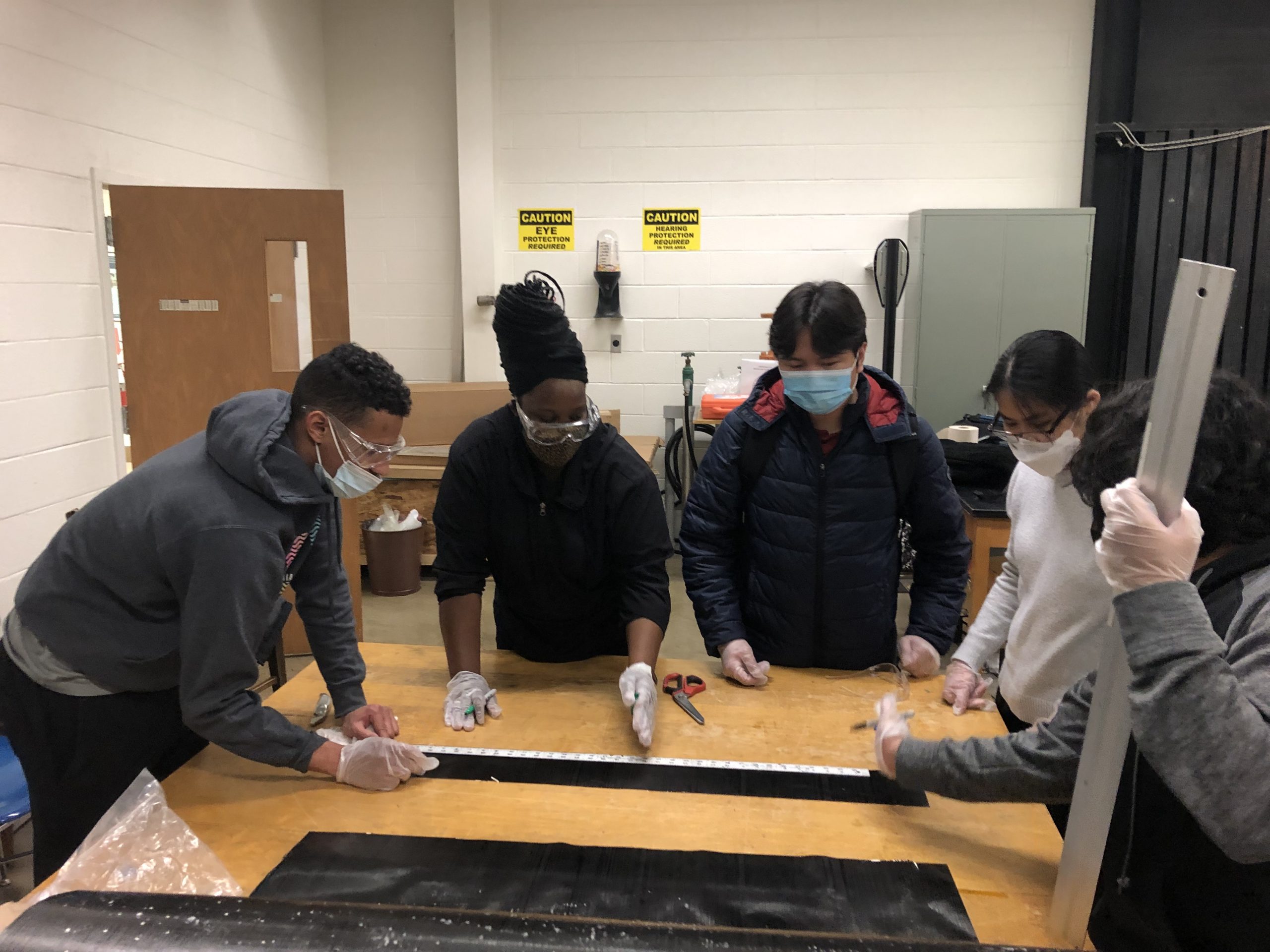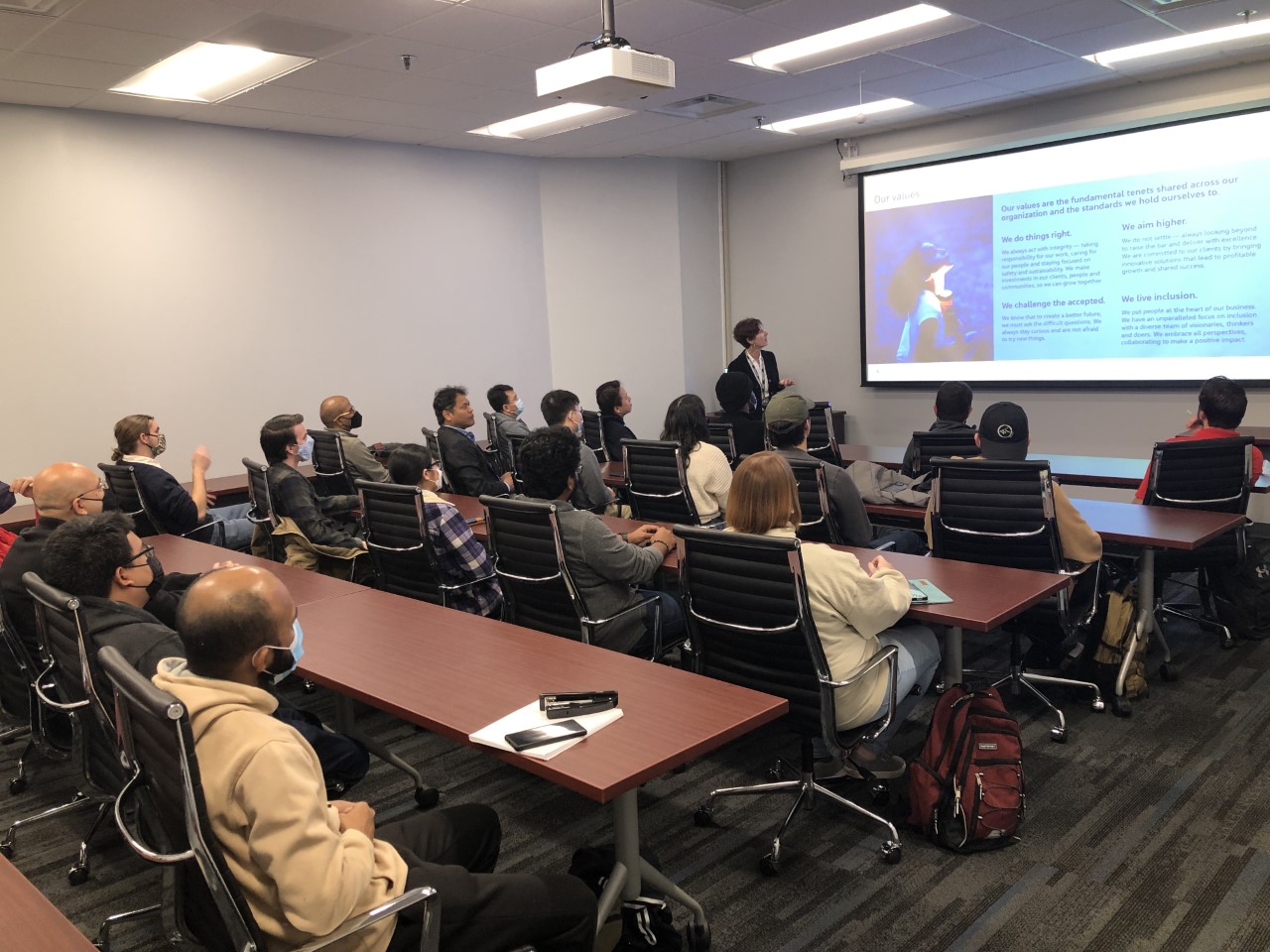Process Modeling of Polymer Composites
Motivation:
- Understand the contribution of processing residual stresses to the residual deformation in laminates
- Prediction of macroscopic homogenized and microscale residual stresses
- Using the predictive capability of the model in designing composite part and the tooling (Fig. 1)
Experimental procedures are necessary for calibrating the comprehensive constitutive model of polymer composite manufacturing include:
- Digital Image Correlation (DIC) measuring of resin shrinkage after gelation allows to measure stress free strain in the sample (Fig. 2)
- Bi-material lamina strip with unsymmetric and unbalanced layup of [0°/90°4] with incorporation of fixed-free boundary conditions allow to study effects of chemical shrinkage after resin gelation on the development of residual deformation
Once the experimental data is collected and analyzed, the proposed constitutive model can be validated using finite element simulation of the bi-lamina configuration (Fig. 3)






